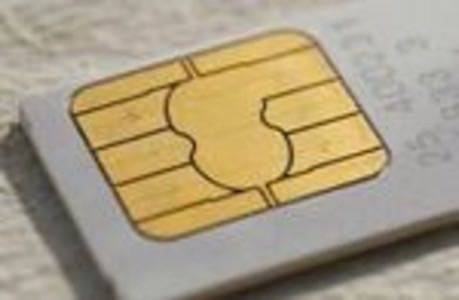The GSM Association (GSMA) has announced the formation of a task force to spearhead development of an embedded SIM technology that can be remotely activated. The task force includes technical experts from major operators worldwide, including AT&T, China Mobile, Deutsche Telekom, France Telecom Orange, KT, NTT DOCOMO, SK Telecom, Telecom Italia, Telefónica, Verizon Wireless and Vodafone, all of whom will work together or the technology’s development.

The goal of the new SIM is to bring Internet connectivity to more devices, like cameras, eReaders, smart meters and standard MP3 players – in other words, it’s a major step towards the creation of the Internet of Things, a vision of Internet’s future where nearly all objects are Web-enabled.
Embedded SIM Details
Like the SIM cards found in today’s mobile phones, the “embedded SIM” now in development will also connect devices to a GSM wireless network. (GSM is a widespread mobile telephony standard, connecting over 3 billion devices to wireless networks.) However, unlike standard SIMs, embedded SIMs will be non-removable chips, more deeply integrated into the device itself and able to be activated remotely.
These embedded SIM cards will be incorporated into more everyday devices, not just phones and tablets, the two main areas where SIM cards have found homes today.
How Much? And Can Networks Keep Up?
There’s a need for technology such as this, given the lackluster rollout of WiMax and the spotty coverage provided by Wi-Fi hotspots – besides cafes, restaurants and airports, we haven’t seen much progress in public Wi-Fi. And even in these cases, some businesses have implemented usage fees for the Wi-Fi they provide.
?Of course, embedded SIMs will likely require a usage fee of some sort, too. But hopefully, by connecting more devices to the public Internet, carriers will be forced to stop nickel-and-diming customers with multiple data plans – one for your phone, another for your tablet PC and a third for the portable Wi-Fi hotspot or the 3G/4G USB dongle for your laptop computer. Instead, the birth of the Internet of Things could at last spur the launch of “everything data plans” (or rather, “all device” data plans), where one plan covers all your devices, from digital picture frames to smartphones and cameras to iPads.
One concern with this technology is that a slew of connected devices coming online could quickly overburden the already strained wireless networks, still struggling with the explosion of smartphones and the heavy data use these devices inspire. Carriers have already started dropping unlimited data plans in favor of “tiered” plans, where you pay for certain amounts of data per month instead. This hinders use of data networks by end users, who fear going over their limits, which would result in higher monthly bills.

That mindset goes against the very philosophy behind what an “Internet of Things” should look like. Ideally, in this connected future it’s assumed that everything is Web-enabled, but you don’t stress over quantity of bits being transferred from device to cloud and back again. If you take pictures, your camera could immediately upload the photos online, for example. Your home would come equipped with smart meters that track your energy use, all viewable from a website on the Internet. Embedded SIMs could also “provide additional functionality for enabling new services such as e-Wallet and NFC applications,” explained Rob Conway CEO of the GSMA in a statement. (NFC, or near-field communications, is a short-range, high-frequency wireless technology for exchanging data. NFC support is arriving in the next version of the Android mobile operating system and likely in future iPhones as well. Several U.S. carriers also recently announced an NFC-enabled mobile payments service called Isis.)
But in none of these scenarios should the end user be fretting about how much all this data use will cost them. If carriers want to really enable an Internet of Things powered by embedded SIMs and NFC technology, they need to start rethinking their data plans, too. Modern plans should encompass all the devices we now use and the devices that will soon come online, while still generating enough revenue to support network infrastructure upgrades.
According to the GSMA, we’ll start seeing devices using the embedded SIMs by 2012. Hopefully, the networks will be ready.




















